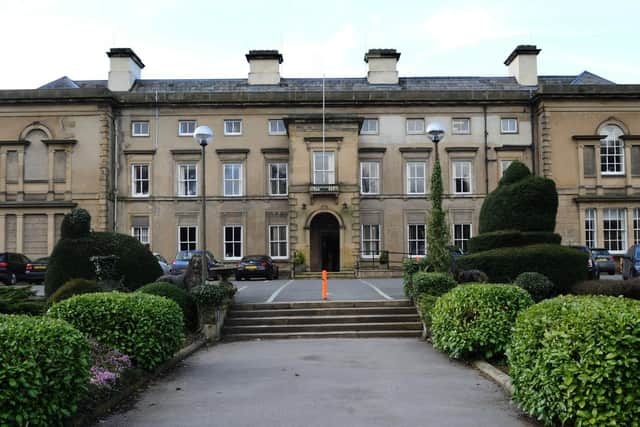Newby Wiske Hall: Artefacts found with human remains under historic Yorkshire hall were ancient
Children’s holiday firm PGL said while work to fully understand the discoveries at Newby Wiske Hall near Northallerton are ongoing, it is developing plans to make a feature of the site’s ancient heritage by sharing findings with guests at the activity centre.
The announcements come almost two months after builders installing drains outside the mansion first spotted the remains, including bones and a human molar, buried about 3ft beneath concrete and close to what had previously been North Yorkshire Police’s canteen.
Advertisement
Hide AdAdvertisement
Hide AdThe Ministry of Justice granted permission for a full exhumation at the grade II-listed property, which was the force’s headquarters from 1976 until 2017 before being controversially sold to PGL, which intends to welcome up to 550 children there at a time.


The body has been exhumed and cleaned for study, but the final report is not yet complete and all the findings and dates for the remains are yet to be confirmed.
York Archaeology, York Archaeological Trust’s commercial archaeology service, has identified fragments of a pot found with the burial are from a coarse ware vessel dating from the Late Iron Age or Early Romano-British periods, which started in 100BC and 43AD respectively.
Coarse ware from the period includes everyday pottery jars, dishes and bowls used for cooking, storage and transporting goods.
Advertisement
Hide AdAdvertisement
Hide AdA PGL spokesperson said: “Study of the remains at Newby Wiske Hall is still ongoing, but early examination of the accompanying pottery potentially links it to the Late Iron Age or Early Romano-British period.
“This is very exciting and only adds to significance of this wonderful site. We look forward to learning more and hopefully sharing our findings with visitors in the future.”
Once the studies are complete the human remains will have to be reburied.
John Buglass, a North Yorkshire-based archaeologist who has previously studied the hall and its surrounding area, said the initial findings were the beginnings of establishing that Newby Wiske is an ancient settlement.
Advertisement
Hide AdAdvertisement
Hide AdHe said: “It does show that people have been living there for about 2,000 years. We knew there was an Iron Age field system and this would appear to be the people cultivating the land there.”
Mr Buglass said coarse ware pottery items were made using bonfire kilns and the vessel was likely to have been made within 15 miles of Newby Wiske.
He said the initial findings did little to establish the status of the person who was buried, as the burial of such items with bodies remained a grey area.

